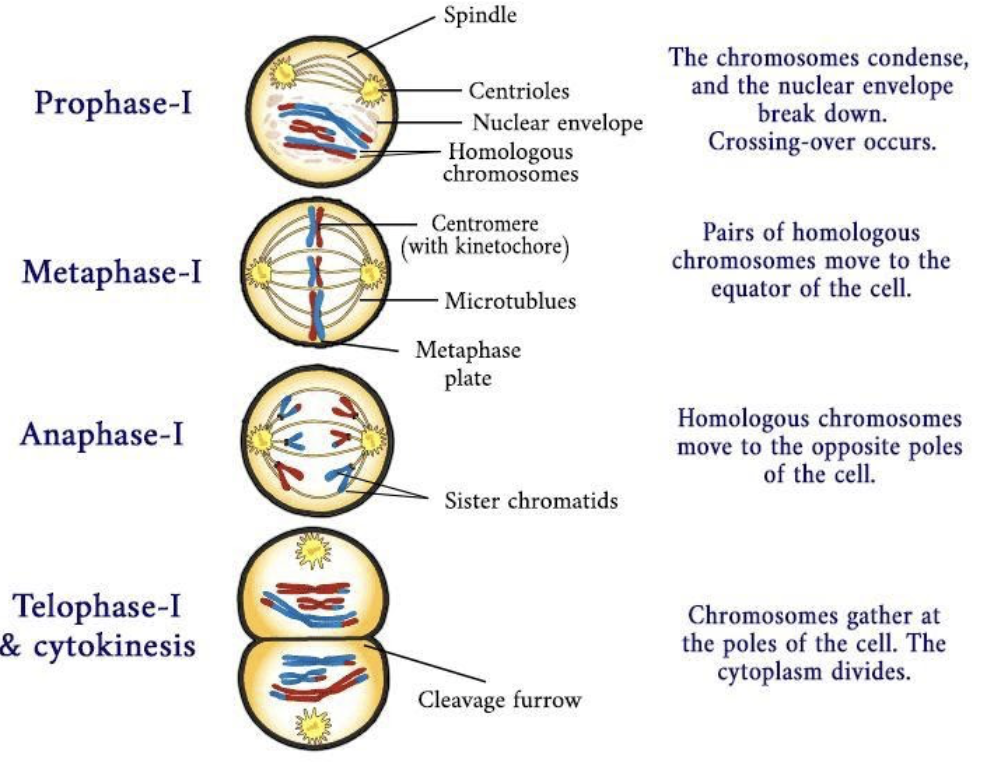
Answer
444k+ views
Hint: The homologous chromosomes are orchestrated in the focal point of the cell with the kinetochores looking inverse poles. The homologous sets situate themselves subjectively at the equator. They contain slight contrasts in their hereditary data, making every gamete have extraordinary hereditary makeup.
Complete answer:
The plant cell contains n = 16, where n speaks to the haploid number of chromosomes. The plant cell which will experience meiotic division will contain the diploid number of chromosomes, 2n = 32.

In the S-phase, the cell replicates the genetic material to form the 32 replicated chromosomes. The homologous chromosomes are adjusted together in the metaphase I to frame the bivalent.
So, if 32 chromosomes pair up with the homolog, this will result in the formation of 16 bivalents.
Additional information: The centrioles are at inverse shafts of the cell.
The sets of homologous chromosomes (the bivalents), presently as firmly curled and consolidated as they will be in meiosis, get orchestrated on a plane equidistant from the shafts called the metaphase plate.
The spindle fibers from one pole of the cell are combined with one chromosome of each pair (seen as sister chromatids), and spindle fibers from the opposite pole are combined to the homologous chromosome (once more, seen as sister chromatids).
So the correct answer is ’(c) 16 bivalents’.
Note: In an organism with two sets of chromosomes, there are four ways in which the chromosomes can be arranged, resulting in differences in the chromosomal distribution in daughter cells after meiosis I. (The diploid organism with 2n chromosomes will have ${ 2 }^{ n }$ possible combinations or ways of arranging its chromosomes during metaphase I.)
Complete answer:
The plant cell contains n = 16, where n speaks to the haploid number of chromosomes. The plant cell which will experience meiotic division will contain the diploid number of chromosomes, 2n = 32.

In the S-phase, the cell replicates the genetic material to form the 32 replicated chromosomes. The homologous chromosomes are adjusted together in the metaphase I to frame the bivalent.
So, if 32 chromosomes pair up with the homolog, this will result in the formation of 16 bivalents.
Additional information: The centrioles are at inverse shafts of the cell.
The sets of homologous chromosomes (the bivalents), presently as firmly curled and consolidated as they will be in meiosis, get orchestrated on a plane equidistant from the shafts called the metaphase plate.
The spindle fibers from one pole of the cell are combined with one chromosome of each pair (seen as sister chromatids), and spindle fibers from the opposite pole are combined to the homologous chromosome (once more, seen as sister chromatids).
So the correct answer is ’(c) 16 bivalents’.
Note: In an organism with two sets of chromosomes, there are four ways in which the chromosomes can be arranged, resulting in differences in the chromosomal distribution in daughter cells after meiosis I. (The diploid organism with 2n chromosomes will have ${ 2 }^{ n }$ possible combinations or ways of arranging its chromosomes during metaphase I.)
Recently Updated Pages
Identify the feminine gender noun from the given sentence class 10 english CBSE

Your club organized a blood donation camp in your city class 10 english CBSE

Choose the correct meaning of the idiomphrase from class 10 english CBSE

Identify the neuter gender noun from the given sentence class 10 english CBSE

Choose the word which best expresses the meaning of class 10 english CBSE

Choose the word which is closest to the opposite in class 10 english CBSE

Trending doubts
How do you graph the function fx 4x class 9 maths CBSE

Fill the blanks with the suitable prepositions 1 The class 9 english CBSE

Which are the Top 10 Largest Countries of the World?

A rainbow has circular shape because A The earth is class 11 physics CBSE

Change the following sentences into negative and interrogative class 10 english CBSE

The Equation xxx + 2 is Satisfied when x is Equal to Class 10 Maths

Give 10 examples for herbs , shrubs , climbers , creepers

Difference between Prokaryotic cell and Eukaryotic class 11 biology CBSE

One Metric ton is equal to kg A 10000 B 1000 C 100 class 11 physics CBSE




